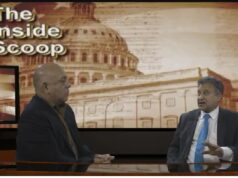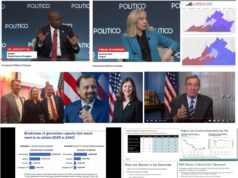By Henry Chambers, Professor of Law at the University of Richmond; teaches and writes on voting rights and constitutional law and also served as a Special Assistant Attorney General in the Virginia AG’s office for preclearance redistricting matters in the wake of the last redistricting in 2011/2012. His views are his own.
The debate about Virginia’s Constitutional Amendment 1 has been disingenuous and misleading, with some very smart people making ill-informed comments. Many Amendment 1 supporters claim the amendment is a principled move toward nonpartisan redistricting. It is not. The amendment merely creates a structure that entrenches Republican power in the 2021 redistricting process, a responsibility Republicans lost over the last decade as Virginians voted Democrats into the majority in both chambers of the General Assembly, and elected Democrats as Governor and Lieutenant Governor.
Amendment 1 creates a Virginia Redistricting Commission (VRC) consisting of 16 members, eight legislators (four Delegates and four Senators) and eight citizen members. The legislators will be chosen two each by the Speaker of the House of Delegates, the Republican leader in the House, the President pro tempore of the Senate, and the Republican leader in the Senate. The legislator members will almost certainly be: two Democratic Delegates, two Republican Delegates, two Democratic state Senators, and two Republican state Senators. The citizen members are selected by a panel of retired state Circuit Court judges, two each from lists provided by the Speaker of the House, the Republican leader in the House, the President pro tempore of the Senate, and the Republican leader in the Senate. Also note that legislation has not been passed to determine on what basis the VRC’s members will be chosen. Nonetheless, the VRC’s makeup is not its most troubling aspect.
The voting rules for the VRC have received scant attention, but may be its most problematic piece. The VRC requires agreement from at least six of eight legislator members and at least six of eight citizen members before a map can be sent to the General Assembly for approval without changes. Consequently, if the VRC’s Democratic legislator members unanimously support a proposed map, they must convince half of the VRC’s Republican legislator members to agree to the map. Put differently: the VRC’s Republican legislator members hold an absolute veto on redistricting maps. If the VRC does not agree on maps, the Supreme Court of Virginia (SCOVA) draws the maps. The amendment appears to allow the SCOVA to draw maps based on a simple majority.
Republican legislators on the VRC will likely vote no on maps they do not like. That is the point of requiring their assent before the VRC approves a map. Simply, Democrats must accept maps Republicans like or the SCOVA draws the maps.
The political clash over maps is unlikely to concern explicit gerrymandering. The clashes may concern how to draw urban districts vs. suburban districts or whether to keep an entire political subdivision together in a district or how to provide minority voters fair representation. These are matters of principle. Whether Democratic principles guide redistricting will depend on whether Republican get what they want.
During the 2019 election cycle, Democratic candidates asked for support in favor of Democratic principles. They asked for money, they asked their supporters to make phone calls and knock doors for them, and they asked for votes. Supporters responded. Those supporters may have supported nonpartisan redistricting. They likely did not realize some of their representatives would vote to give Republicans a veto over Democratic redistricting policy.
This is the first of several pieces about Amendment 1. Watch this space.













![Video: Sen. Tim Kaine on “Meet the Press” Says DoJ Not Complying with the Law on Release of ALL the Epstein Files, But Argues “I think [impeachment/contempt for DoJ officials is] premature”](https://bluevirginia.us/wp-content/uploads/2025/12/kainemtp1221-100x75.jpg)

![Video: Rep. James Walkinshaw (D-VA11) Says “It’s enormously frustrating,” as “the law is clear…the full files were supposed to be released [yesterday] and the Trump administration is not in compliance with that law”](https://bluevirginia.us/wp-content/uploads/2025/12/walk1219-100x75.jpg)